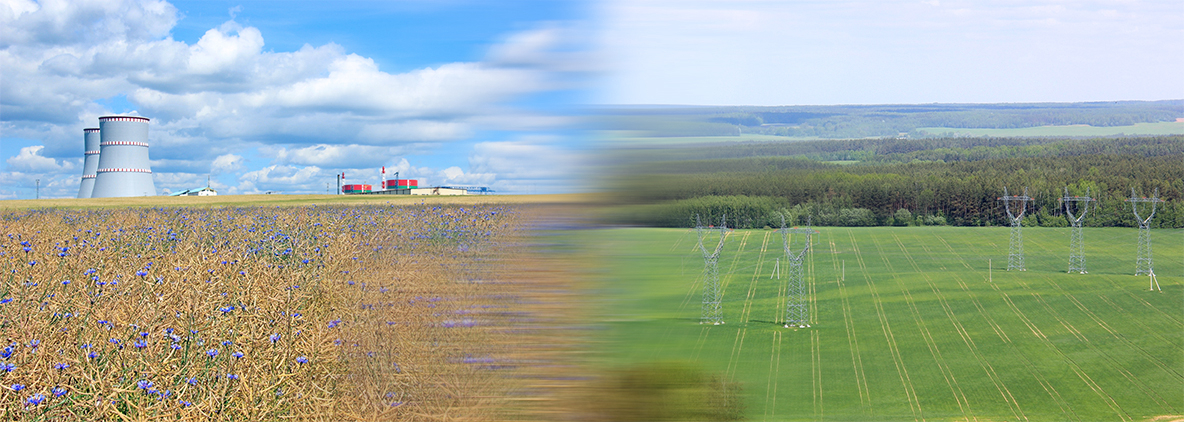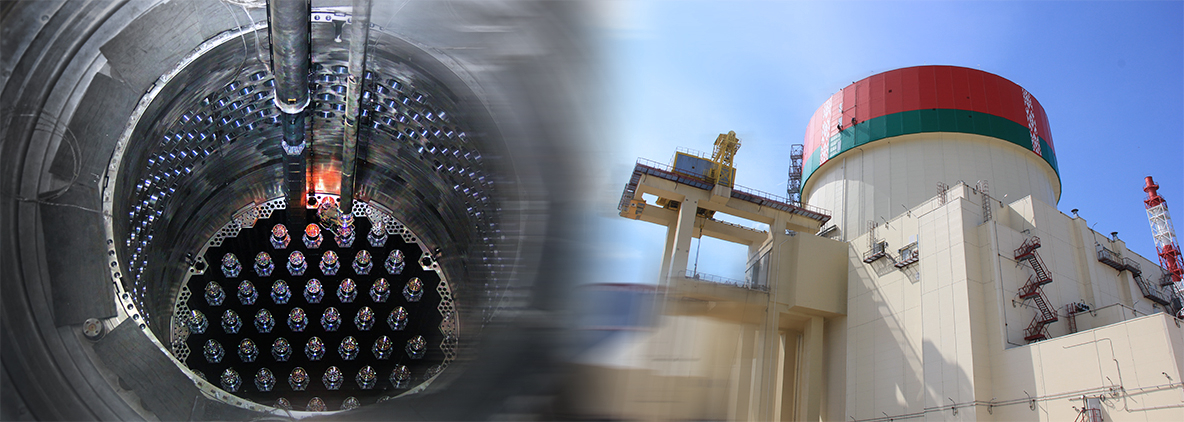Address:
Administrative and laboratory building (00UYA)
Vornyany village council, 2/7
Ostrovets district, Grodno region, Republic of Belarus 231220
Е-mail: belaes@belaes.by
NPP Information Center: ic@belaes.by

Phones:
Reception: +375 (1591) 4-53-59, fax: +375 (1591) 4-54-00
HR department: +375 (1591) 45-357; +375 (1591) 46-697
Accounts department: +375 (1591) 46-358
NPP Information Center: +375 1591 46 605
Purchases: +375 (1591) 4-67-19, +375 (1591) 4-67-34
Tuesday, 30 April 2013
Belarusian nuclear station designed to prevent radiation release
Written by Information and PR department
The impossibility of radiation release into the environment in any emergency is the fundamental design feature of the Belarusian nuclear power plant. The statement was made by Mr Sergei Boyarkin, Program Director of the Capital Construction Directorate of the Russian state corporation Rosatom, at the expo and conference AtomExpo Belarus 2013 on 4 April, BelTA has learned.
Sergei Boyarkin said that the Russian AES-2006 design chosen for the Belarusian station takes into account all the conclusions made after the emergency at Japan’s Fukushima nuclear power plant and emergencies at other foreign nuclear power engineering installations.
The Belarusian design is a generation-three-plus one and implements several built-in safeguards. Control over the reactor will be preserved in any situation. The approach has been implemented taking into account causes of the Chernobyl catastrophe when control over the reactor was lost. The Belarusian design utilizes heat dissipation systems in response to the Fukushima accident when nuclear fuel burnt through the reactor shell due to the inability to dissipate heat. Then radioactive materials are localized to prevent their release into the environment. “These fundamental functions are part and parcel of the design and will be secured in any circumstances,” stressed Sergei Boyarkin.
As another precaution the designers were conservative in calculating the magnitude of the earthquake the power plant can survive. “The power plant is designed to survive seven points but taking into account the conservative principle you can add two to it although that magnitude is unimaginable in Belarus,” explained the Rosatom representative.
The designers also used the versatility principle, which expects that there is no common factor to disable all the safeguards at the same time. “Some of the safeguards are powered by different sources, some don’t need electricity at all and utilize laws of physics to ensure solid safety,” said the representative of the corporation.
While comparing the nuclear power plant designs that exist on the market today, Sergei Boyarkin remarked that the French design utilizes only active safeguards while the American one uses only passives. The Russian design AES-2006 has both. Apart from that, the design envisages the construction of the so-called reactor core trap. It is meant to prevent molten nuclear fuel to reach the environment the way it happened at the Fukushima nuclear power plant. “The trap will cool down the active molten mass so that it would not be able to burn through the protective shell. It will absorb ions to prevent a chain reaction and also absorbs excessive hydrogen to prevent an explosion like the one that happened at the Fukushima,” said Sergei Boyarkin.
Today’s Rosatom is the world’s only company to offer the construction of nuclear power plants fitted with active and passive safeguards that have been tested at existing power plants, stressed the executive.
“We don’t just offer 3+ generation reactors. We have references secured by the operation of Tianwan units that have passed two dozens of IAEA inspections and have been officially recognized the first units of this generation. Our corporation is really the world’s number one. No one else offers such things on the global market,” he remarked.
According to the source, Rosatom is now building 28 light water-cooled and moderated reactors while 54 Russia-made reactors of the kind are used across the globe. “After the Fukushima accident all the units of ours have been subjected to stress tests using other methods in Russia (stricter than foreign ones) and foreign methods in Europe. All the power-generating units have passed these stress tests,” said Sergei Boyarkin.
Published in
International collaboration
© 2010- State enterprise «Belarusian NPP». All rights reserved. At any use of materials of the web-site, the active reference is obligatory on www.belaes.by.
The web-site operates error-checking system. If you find a mistake, highlight it and press Ctrl + Enter.
The web-site operates error-checking system. If you find a mistake, highlight it and press Ctrl + Enter.




























